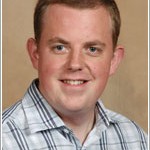Please note: This course will be taught online only. In person study is not available for this course.

Christopher Saker is a Lecturer in the Department of Mathematical Sciences and the East of England Area Co-ordinator for the Further Mathematics Support Programme. His research interests lie in the combinatorics of words, particularly the study of unavoidable sets.

Jessica Claridge graduated from Queen Mary, University of London with an MSci in Mathematics in 2012. She then went on to complete a PhD in Mathematics at Royal Holloway, University of London in 2017. She joined the University of Essex in 2016, and is currently a Lecturer in Mathematics. Her research interests include Network Coding, Combinatorics and Finite Fields.
Course Objectives
Please refer to the information under 1A Mathematics for Social Scientists, Part 1.
Course Content
Part 2 of the course starts by continuing the study of calculus begun in Part 1, with discussion of integration and calculus of functions of more than one variable. An application to least squares methods in linear regression is described. An introduction to vectors and matrices follows, together with basic definitions and properties, and their uses; for example, in summarising statistical data, and constructing covariance and correlation matrices.
Recommended Reading
For a review of the concepts listed in the prerequisites we recommend the differentiation section of the Calculus Refresher which can be found by following the revision booklets link at mathcentre.ac.uk. Note that the site also has learning resources available for this and other basic mathematical topics.
Additional Reading
Haeussler, E.F., Paul, R.S., and, Wood, R. 2004. Introductory Mathematical Analysis for Business, Economics, and the Life and Social Sciences. Prentice Hall.
Students entering the course should be familiar with the basic ideas of arithmetic and algebra (addition, subtraction, multiplication, division, use of brackets, positive negative and fractional powers, and the solution of simple equations) as described, for example, in Haeussler, E.F., Paul, R.S. and Wood,R., Mathematical Analysis for Business, Economics and the Life and Social Sciences, 11th ed., Pearson (pp. 2-19, 30-34 and 147-151). Students should possess a basic scientific calculator. Students may take any or all of the three Parts of the course, but anyone taking Parts 2 or 3 will be presumed to be familiar with the material covered in the preceding Parts.
Lecture 1: Recap of Session 1.
Lecture 2 & 3: Integration.
Lecture 4: Differential equations.
Lecture 5: Calculus of more than one variable.
Lecture 6: Vectors – addition and subtraction; scalar product; orthogonal vectors.
Lecture 7: Matrices – addition, subtraction and multiplication by a scalar; matrix multiplication.
Lecture 8: Matrices – determinant and trace.
Lectures 9 & 10: Matrices – in summarising statistical data and in constructing covariance and correlation matrices.
Reading list:
The book by Haeussler, Paul and Wood referred to above is an acceptable text for Sessions 1 and 2 of the course. Students may also find the following books useful, although it is not necessary to read them before the course:
Arya,J.C. and Lardner,R.W., Mathematical Analysis for Business, Economics and the Life and Social Sciences, 4th ed., Pearson
Booth, D.J. Foundation Mathematics. Addison Wesley
Dowling, E.T. Introduction to Mathematical Economics. Schaum’s Outline Series. McGraw Hill. (This book contains many worked examples.)
Black, J. and Bradley, J.F. Essential Mathematics for Economists. Wiley.
Chiang, A.C. Fundamental Methods of Mathematical Economics. McGraw Hill.
Croft, A. and Davison, R. Foundation Maths. Longman.
Green, P.E. Mathematical Tools for Applied Multivariate Analysis. Academic Press.
Grossman, S.I. Elementary Linear Algebra. Wadsworth.
Mizrahi, A. and Sullivan, M. Mathematics, an Applied Approach. Wiley.
Nicholson, R.H. Mathematics for Business and Economics. McGraw Hill.
Page, S., Berry, J. and Hampson, H. Mathematics, a Second Start. Prentice Hall.
Smith, K.J. College Mathematics and Calculus. Brooks/Cole.
The list contains good books for people wanting to read around the topics we will be covering during the course but they are not required reading and will not be referred to directly in the lectures so purchasing them is entirely optional.




